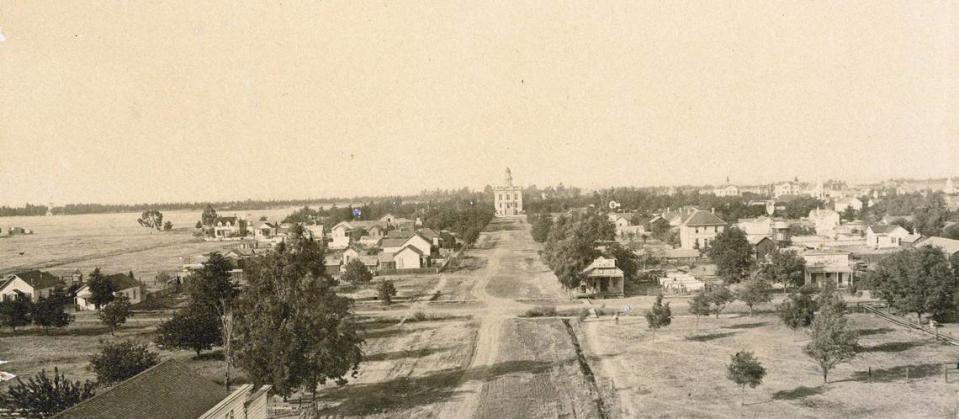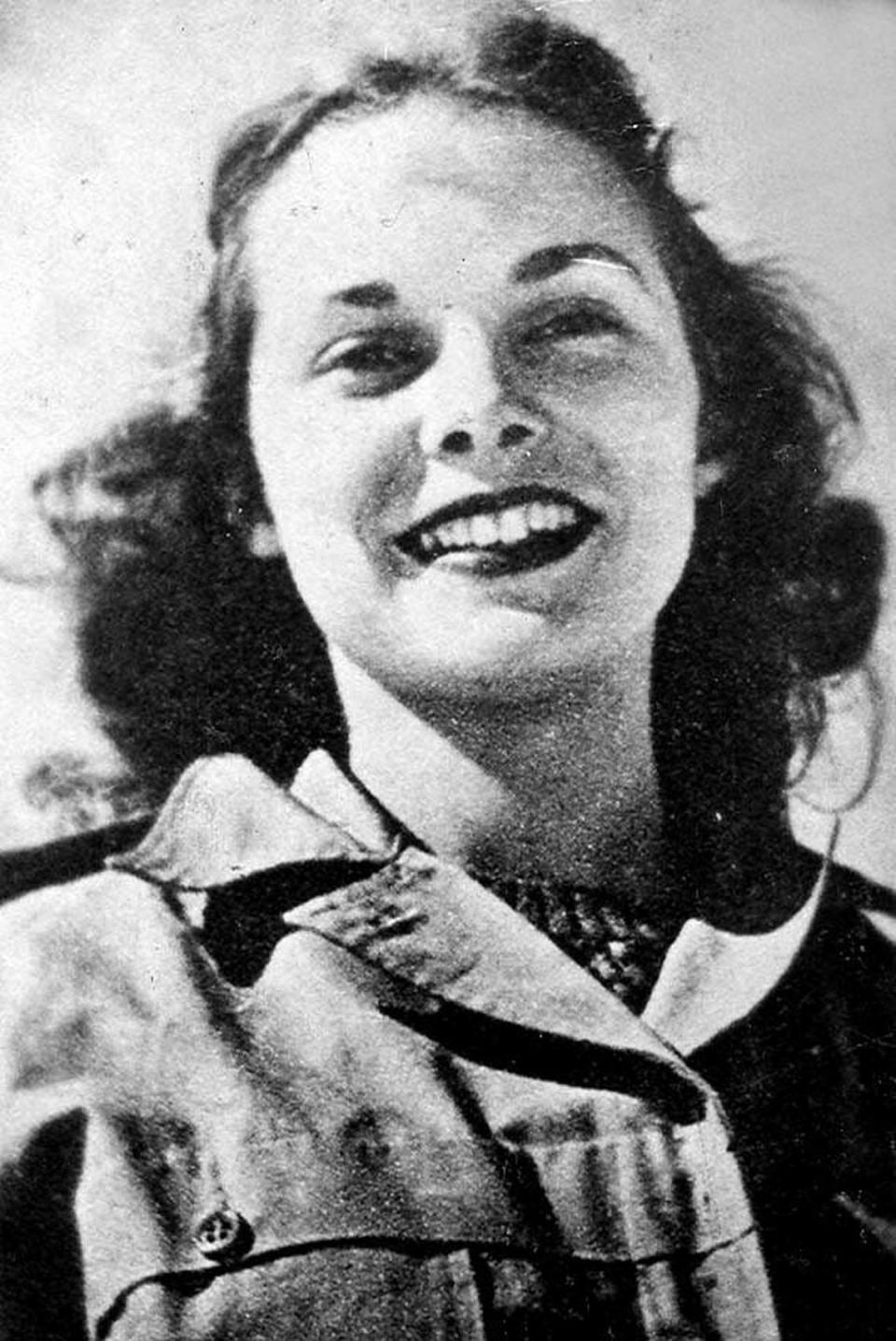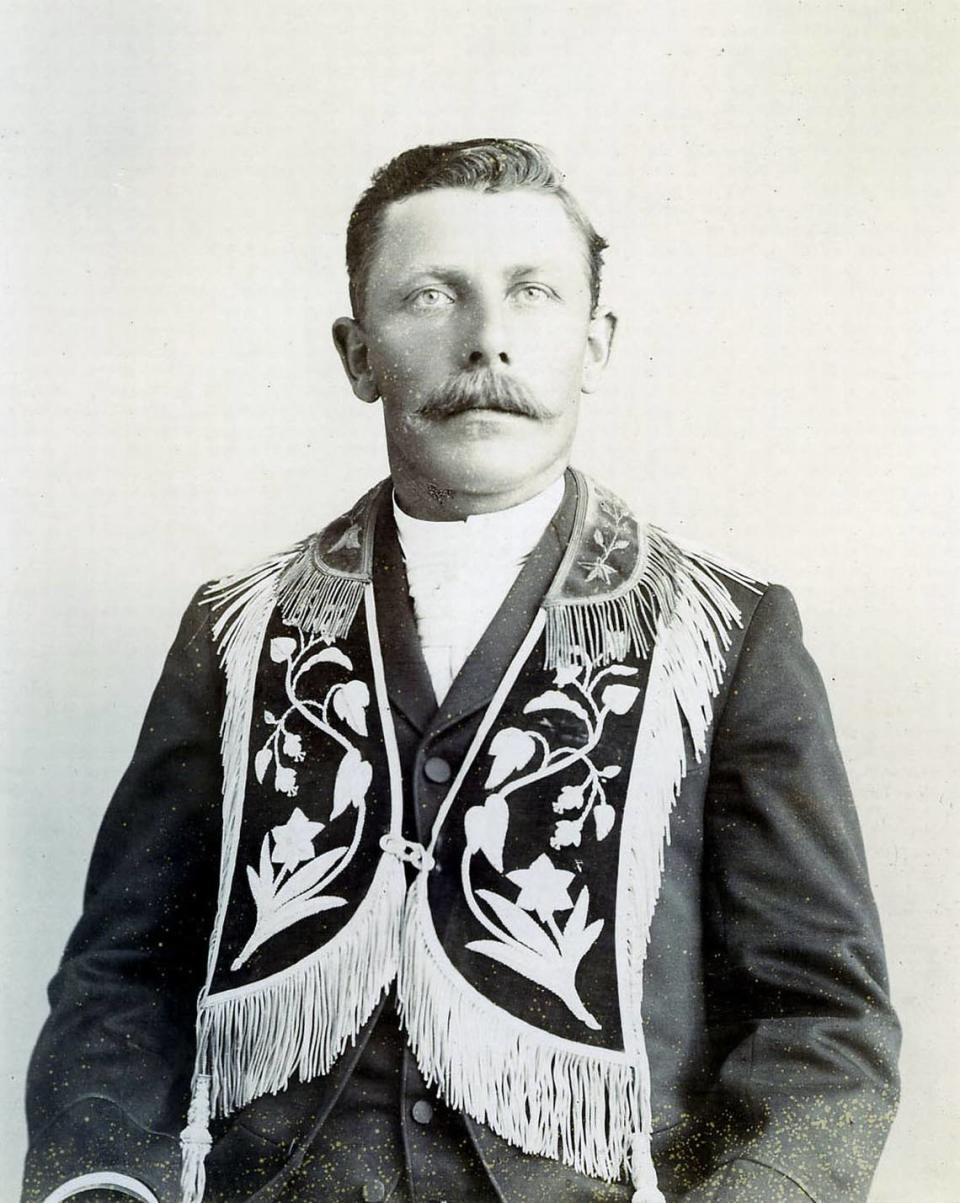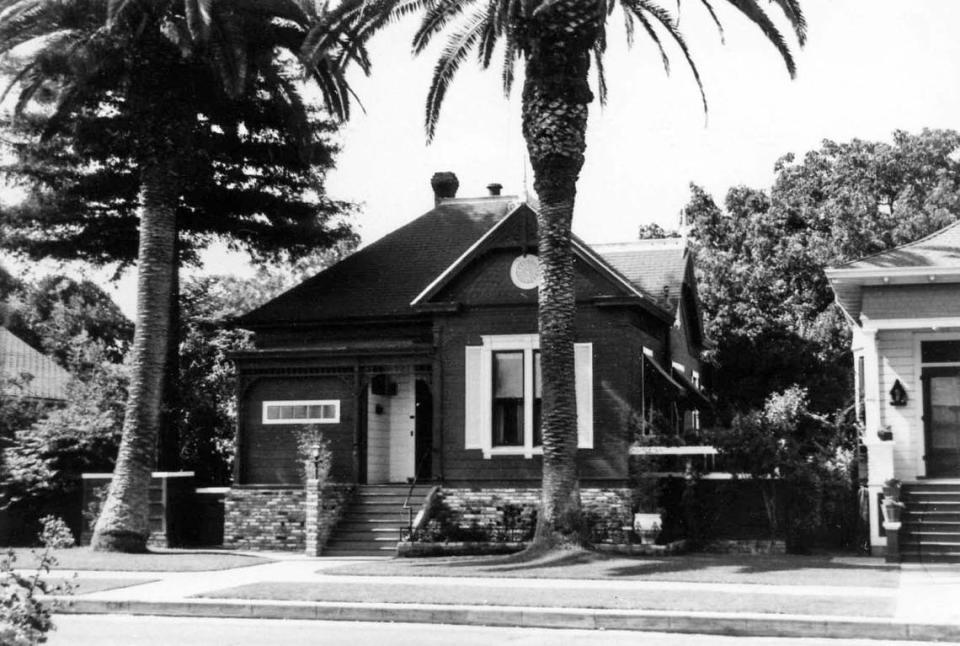Actress Janet Leigh lived in Merced. That and more in new Courthouse history exhibit
Actress Janet Leigh portrayed a character who was probably the best-known murder victim in American film history when she played the role of Marion Crane in Alfred Hitchcock’s Psycho. Janet was a Merced native born to Frederick Robert and Helen Lita Morrison as Jeanette Helen on July 6, 1927. Have you ever wondered where she lived?
You guessed it. Janet Leigh lived in the Courthouse Park Neighborhood, and her birthplace still stands today at 1002 22nd Street Unit E. Built in 1923, these Craftsman-style structures with hipped gables were typical of this neighborhood during that time. According to local author Wayne Eisenhart, “From 1905 through the 1920s, these homes were built in all neighborhoods of Merced, but they are most ubiquitous in the Courthouse Park Neighborhood.”
The homes in the Courthouse Park Neighborhood (east of R St., south of Santa Fe Railroad, west of M St., and north of 18th St.) are the subjects of the Merced County Courthouse Museum’s newest exhibit. They are rich in history but modest in recognition compared to the stately Queen Victorians in the neighboring Old Town district.
Opening on Thursday, June 1, at 5 p.m., the exhibit brings to life the people who lived in this understated neighborhood and the homes that have endured change and witnessed progress. The show is based on Wayne Eisenhart’s newest book, titled “Courthouse Park – The Neighborhood,” which will be released by the Merced County Historical Society on opening night. This 202-page book features most of the residential and commercial structures in color photos, lists the succession of occupancies, and chronicles the history of the residents.
Janet Leigh may have been the most famous resident of this neighborhood, even though she only lived here for a few years. A rival for the title of most famous resident of Courthouse Park was “Mr. Nectarine,” who made Merced his home during the Great Depression. Frederick Anderson was nicknamed “Mr. Nectarine” because he invented several varieties of nectarine, such as “Le Grand,” “Red Grand,” “Sun Grand,” “Late Le Grand,” and “Early Sun Grand.”
Born in 1892 in Albion, California, Fred earned his master’s degree in pomology and plant genetics from UC Berkeley. Coming to Merced County in 1932, he started operating a 62-acre orchard and experimenting with crossing small white flesh nectarines with the existing yellow varieties. In 1938, Fred and his wife Gladys moved into a single-story Craftsman bungalow at 826 West 22nd Street in Merced. He lived there until he passed away in 1982.
So, how was the Courthouse Park Neighborhood developed? It all began with the railroad, of course. In 1873, the Central Pacific Railroad Company donated four blocks to the County of Merced, which became Courthouse Park. Several homes were built first around Courthouse Park and then on the 600 and 700 blocks of 18th, 19th, and 20th Streets.
The population growth in the early 20th century led to the expansion and development of the neighborhood, which became what it is today. Hal Shaffer, Julius Fritz, and Louis Wegner were just a few Courthouse Park residents who were instrumental in shaping and building the neighborhood. The following information is summarized mainly from Wayne Eisenhart’s work and is part of the new Museum display.
Hal Shaffer, better known as Judge Shaffer, was a leading force in the residential development of the land west of Courthouse Park, especially along 20th Street. He built his home on the northwest corner of 20th and O Streets, which set the standard for Craftsman homes in 1912. His brother Richard, an auto dealer, followed in 1914, purchasing and upgrading an existing home at the other end of the block at P Street. Wayne concluded, “This became a neighborhood inhabited by young professionals—insurance and real estate agents, doctors, and bank officials. Several, at different times, were members of the Shaffer family.”
A good number of homes in this neighborhood were built by Julius Edward Fritz. A California native, Julius came to Merced in the early 20th century and, by 1913, became a popular contractor specializing in custom homes. His beautiful Spanish Colonial Style home at 1036 West 21st Street was a good example. In addition to his residential construction, Julius was known for commercial work downtown, including the Central Hotel remodeling in 1927. As a Courthouse Park resident, Julius was active in the community, serving as a city trustee (councilman) in the 1930s and 1940s and Mayor of Merced from 1946 to 1949. Julius died in 1973, still a resident of West 21st Street.
A contemporary of Julius Fritz in Merced’s construction trade is Louis J. C. Wegner. Louis also specialized in building design, studying architecture in Germany. Among his projects in Merced were the Kaehler-Rector House at 408 West 25th Street and the Reinhold Kaehler House at 759 West 18th Street. In 1901, Louis moved into his self-designed, old-fashioned Queen Anne-style cottage at 636 West 23rd Street. It was built on a high brick-faced foundation with a truncated hip roof, an offset front-facing gable, and a side-facing gable on the west side. Louis and his wife Hedwig lived in this home until they died in 1940 and 1948. Unfortunately, this home was cleared to make room for the new Merced County Superior Court building in the early 1990s.
In this exhibit, we have reconstructed the neighborhood in 1959, house by house and block by block, through a collection of historic photos. Yes, almost all the houses are on display so please join us for the exhibit opening on June 1. At 5:00 p.m., Wayne Eisenhart will autograph his new book and make a few remarks. In addition, Robert Leachman, a recent UC Merced graduate, has created an interactive Story Map to showcase the residential-to-commercial transition in the area immediately adjacent to Courthouse Park.
For more information about the exhibit, contact the Museum office at (209) 723-2401.






 Yahoo Sports
Yahoo Sports 